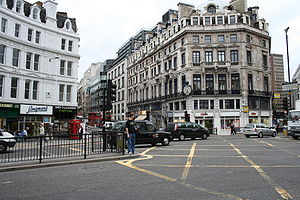
Probably the most significant date in the calender with regard to the Spillers during the Great War.
On this day started the battle of Langemark. In very wet conditions the Vics tried to advance towards Polygon Wood from their starting point around "Surbiton Villas". They were repelled by the Germans and during this action both Harry and Bert were reported missing.
My great-grandmother wrote to the regiment for news of her missing sons and received a letter back from the Adjutant - James Nichols, the letter is dated 16th Sept 1917.
'I cannot say how sorry I am that no information has been received of you two sons.........I am afraid that there is practically no hope at all for either of them.'
'HS Spiller (Bert) was first reported wounded but has since proved to be missing and I am afraid that he must have been hit a second time.'
'When Harry was reported missing he was again acting as Company Sgt Major..........Absolutely fearless, always splendidly cheery he was the finest NCO I have ever seen.........I don't think any man ever enjoyed the war like he did or inflicted more casualties on the enemy.'
Well, first of all, Harry was not killed but taken POW - he returned home on 28th December 1918. Unfortunately, Bert was killed that day and now lays in Tyne Cot cemetery.
After the war Harry told the story that during that day one of his men told him that he had seen another Vic that had been wounded and was as tall as him somewhere along the line. As all the Spillers were over 6' tall it is quite likely that this was Bert. Harry resolved to visit this chap later in the day but events precluded that.
In all likelihood Bert was hit a second time and was killed.
Harry lived on and died in1963. He was cremated on the day JFK was shot.
RIP Harry & Bert

![Reblog this post [with Zemanta]](http://img.zemanta.com/reblog_e.png?x-id=77f34b68-1204-4864-9048-af7536020e84)

![Reblog this post [with Zemanta]](http://img.zemanta.com/reblog_e.png?x-id=baa920c1-2e45-418f-b839-ab6e3274d97a)

![Reblog this post [with Zemanta]](http://img.zemanta.com/reblog_e.png?x-id=1a6ff698-6d1b-45b1-bb36-35cc554f05e7)